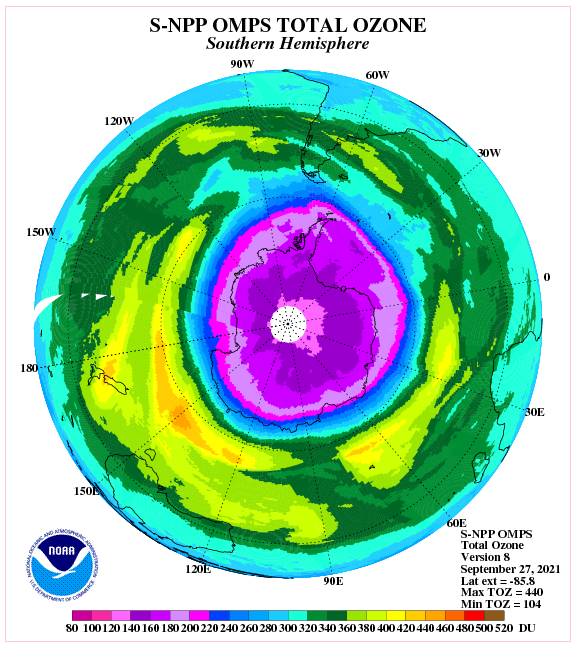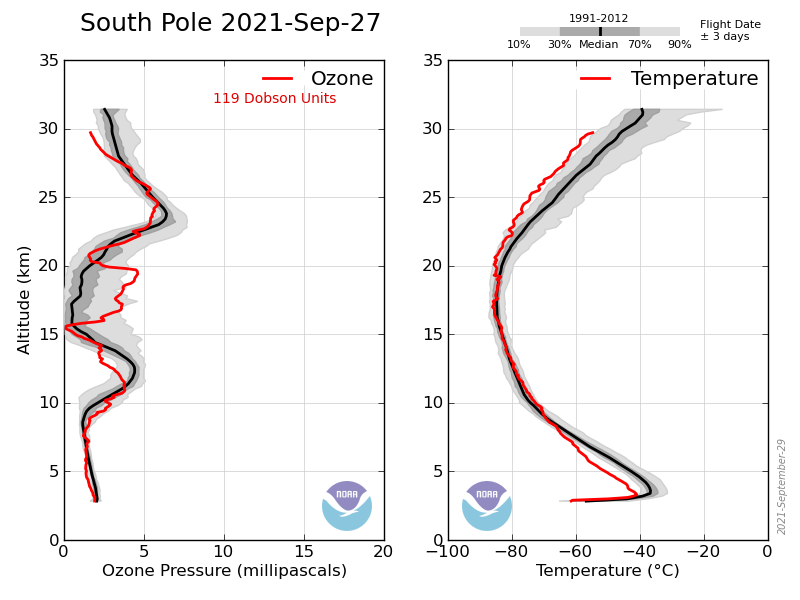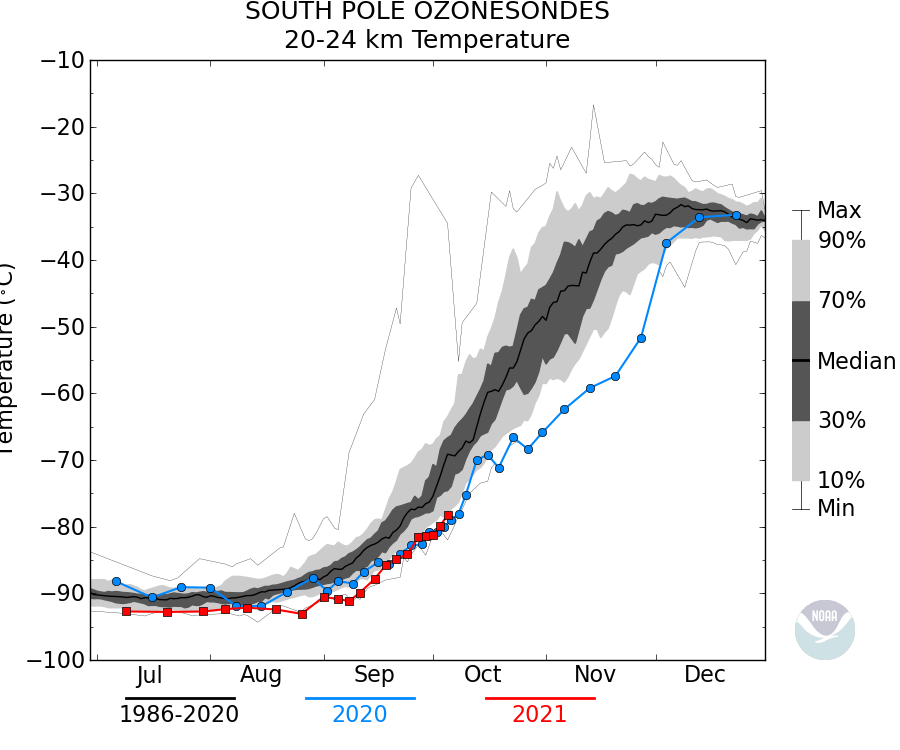By Irina Petropavlovskikh, CIRES and NOAA scientist
The beginning of October is showing low ozone values over Antarctica, including the South Pole. This rapid ozone depletion has been ongoing through September, as seen in the time plots for total ozone and stratospheric ozone columns from ozonesonde records at the South Pole.
Stratospheric temperatures are still low and therefore support the presence of polar stratospheric clouds that play a catalytic role in the chemical reactions that lead to ozone destruction.
Ozone depletion in 2021 has been very similar to 2020, when the polar vortex stayed strong.
At this point, whether or not the vortex will start to break up in the upcoming month will be key to sustaining or reducing the ozone hole.
By the end of September, stratospheric ozone was significantly depleted between 14 and 24 km, but not as completely as in 2020. Temperatures above 20 km are still very cold, supporting continuation of polar stratospheric clouds and ozone depletion.

However, there is a concerning discrepancy between the minimum in total ozone derived from the South Pole ozonesonde profiles (119 DU on September 27th) and much lower values observed by the S-NPP OMPS satellite (100 DU on September 27) over Antarctica. For more on this, see NASA’s Ozone Watch: https://ozonewatch.gsfc.nasa.gov/SH.html
Satellite plots demonstrate that ozone inside of the vortex is not well mixed and there are different pockets of ozone depleted air masses inside the vortex and away from the South Pole. The plot also shows that some pockets of low ozone have been extending outside the vortex to the East of the South American southern latitudes. When an ozone-depleted air mass moves over the populated areas in Brazil or Chile, a warning would be issued for high UV levels that, with long exposure, might be dangerous to people in the region.

Stratospheric ozone (12-20 km) is staying depleted at the moment and might continue to deplete as long as the vortex stays strong and temperatures are low. This year’s depletion pattern is following the 2020 ozone depletion season—the longest-lasting ozone hole since 2000.


